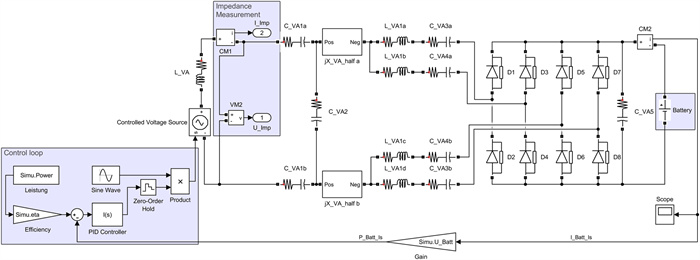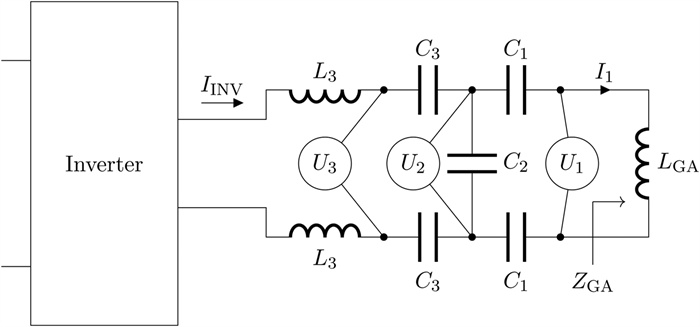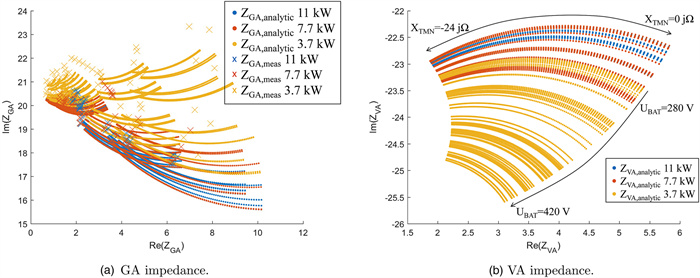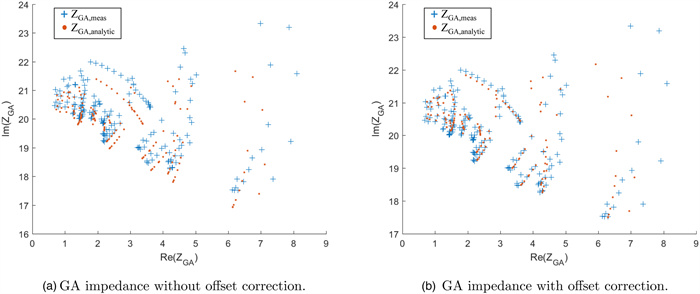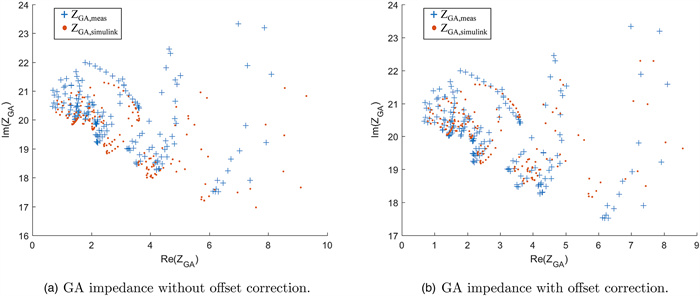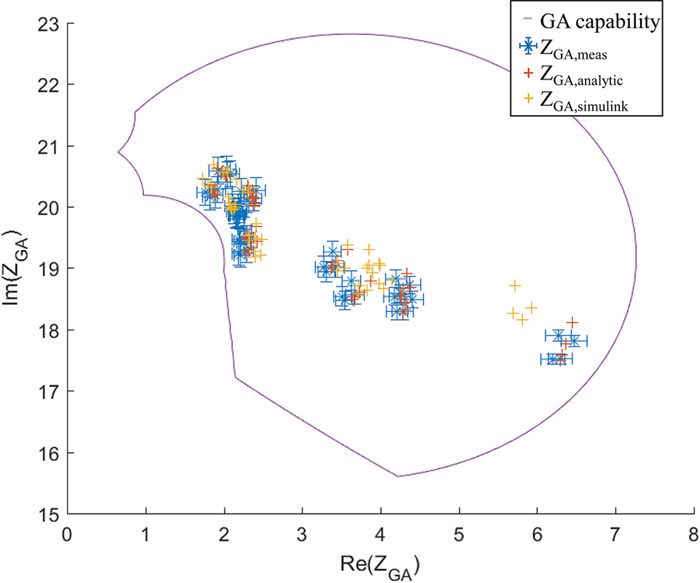A comparison on simulated, analytic, and measured impedance values for an inductive power transfer system
-
1.
BMW Group, 80788 Munich, Germany
-
2.
Technical University of Munich, Arcisstr. 21, 80333 Munich, Germany
-
3.
WiTricity Corporation, MA 02472 Watertown, USA
More Information
-
Author Bio:
 Marius Hassler
Marius Hassler received his B.Sc. and M.Sc. degreel in physics with specialization in condensed matter from the Technical University of Munich, Germany. He is currently working toward the Dr.-Ing. degree in engineering with BMW Group, from the Technical University of Munich, Germany. His current research interests include circuit simulation and inductive charging.
 Oguz Atasoy,
Oguz Atasoy, Ph.D. is working as a senior staff scientist at Witricity Corporation. His tasks include the design, development, and improvement of wireless power solutions. His work at Witricity leads to patent applications as well as conference publications. He received his Ph.D. from EPFL (Swiss Institute of Technology Lausanne) in Microsystems and Microelectronics, and his MSc and BSc in Electrical and Electronics Engineering from Bogazici University, Turkey.
 Karl Twelker
Karl Twelker received his Ph.D. in experimental neutrino physics from Stanford University in 2014. He joined WiTricity Corporation in 2015 to work on wireless power systems for automotive and consumer electronics applications. He is now at The Charles Stark Draper Laboratory, Inc.
 Morris Kesler
Morris Kesler is the Chief Technology Officer at WiTricity Corporation where he is responsible for the research and development activities in the company. He joined WiTricity in 2007 and has served as Chief Engineer and vice president of research and development. Prior to joining WiTricity, he was a founder of Wide Net Technologies, Inc., which developed unique optical communication and sensing systems for both government and industry, and a Consulting Engineer at PhotonEx Corporation, which developed a 40 Gb/s long-haul optical transport system. Dr. Kesler spent 10 years with the Georgia Tech Research Institute where he led research programs in electromagnetic scattering, antenna arrays, novel antenna structures, and photonic band-gap structures. He holds over 100 patents and has published over 40 technical journal and conference papers. He holds a B.S., M.S., and Ph.D. from the Massachusetts Institute of Technology in Electrical Engineering and Computer Science.
 Johannes Birkendahl
Johannes Birkendahl received his B.Sc. and M.Sc. degree in electrical engineering from the Technical University of Munich, Germany, where the focus of his studies layed in energy storages. He is currently working as a tester for the software development of the energy storages at BMW.
 Josef Krammer
Josef Krammer received the Dipl.-Ing. degree in electrical engineering from the Department of Electrical and Computer Engineering at the Technical University of Munich, TUM, Germany. He worked as a researcher at the Institute of Circuit Theory and Signal Processing at the TUM where he received the degree of Dr.-Ing. Since 1991 he is working at the BMW Group in different engineering positions for the development of electronics for conventional and electric vehicles
-
Corresponding author:
Marius Hassler, BMW Group, 80788 Munich, Germany. E-mail: marius.hassler@bmw.de
-
Abstract
Studies on inductive power transfer (IPT) systems are most times either theoretical or experimental. In this paper, we want to bring theoretical models and experimental data together using the impedance based interface proposed in SAE J2954. This proposal characterizes the IPT system by impedances at both coil terminals. We show how the experimental data was retrieved at the interface and use it to validate an analytical model and a Simulink model described within this study. Such models can support the design and development process and therefore a comparison with reality is necessary.
-
About this article
Cite this article
Hassler M, Atasoy O, Twelker K, Kesler M, Birkendahl J, et al. 2020. A comparison on simulated, analytic, and measured impedance values for an inductive power transfer system. Wireless Power Transfer 7(1) :51-59 doi: 10.1017/wpt.2020.6
|
Hassler M, Atasoy O, Twelker K, Kesler M, Birkendahl J, et al. 2020. A comparison on simulated, analytic, and measured impedance values for an inductive power transfer system. Wireless Power Transfer 7(1) :51-59 doi: 10.1017/wpt.2020.6
|


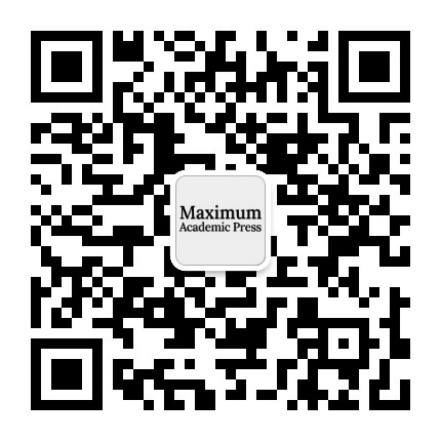







 Marius Hassler received his B.Sc. and M.Sc. degreel in physics with specialization in condensed matter from the Technical University of Munich, Germany. He is currently working toward the Dr.-Ing. degree in engineering with BMW Group, from the Technical University of Munich, Germany. His current research interests include circuit simulation and inductive charging.
Marius Hassler received his B.Sc. and M.Sc. degreel in physics with specialization in condensed matter from the Technical University of Munich, Germany. He is currently working toward the Dr.-Ing. degree in engineering with BMW Group, from the Technical University of Munich, Germany. His current research interests include circuit simulation and inductive charging.  Oguz Atasoy, Ph.D. is working as a senior staff scientist at Witricity Corporation. His tasks include the design, development, and improvement of wireless power solutions. His work at Witricity leads to patent applications as well as conference publications. He received his Ph.D. from EPFL (Swiss Institute of Technology Lausanne) in Microsystems and Microelectronics, and his MSc and BSc in Electrical and Electronics Engineering from Bogazici University, Turkey.
Oguz Atasoy, Ph.D. is working as a senior staff scientist at Witricity Corporation. His tasks include the design, development, and improvement of wireless power solutions. His work at Witricity leads to patent applications as well as conference publications. He received his Ph.D. from EPFL (Swiss Institute of Technology Lausanne) in Microsystems and Microelectronics, and his MSc and BSc in Electrical and Electronics Engineering from Bogazici University, Turkey.  Karl Twelker received his Ph.D. in experimental neutrino physics from Stanford University in 2014. He joined WiTricity Corporation in 2015 to work on wireless power systems for automotive and consumer electronics applications. He is now at The Charles Stark Draper Laboratory, Inc.
Karl Twelker received his Ph.D. in experimental neutrino physics from Stanford University in 2014. He joined WiTricity Corporation in 2015 to work on wireless power systems for automotive and consumer electronics applications. He is now at The Charles Stark Draper Laboratory, Inc.  Morris Kesler is the Chief Technology Officer at WiTricity Corporation where he is responsible for the research and development activities in the company. He joined WiTricity in 2007 and has served as Chief Engineer and vice president of research and development. Prior to joining WiTricity, he was a founder of Wide Net Technologies, Inc., which developed unique optical communication and sensing systems for both government and industry, and a Consulting Engineer at PhotonEx Corporation, which developed a 40 Gb/s long-haul optical transport system. Dr. Kesler spent 10 years with the Georgia Tech Research Institute where he led research programs in electromagnetic scattering, antenna arrays, novel antenna structures, and photonic band-gap structures. He holds over 100 patents and has published over 40 technical journal and conference papers. He holds a B.S., M.S., and Ph.D. from the Massachusetts Institute of Technology in Electrical Engineering and Computer Science.
Morris Kesler is the Chief Technology Officer at WiTricity Corporation where he is responsible for the research and development activities in the company. He joined WiTricity in 2007 and has served as Chief Engineer and vice president of research and development. Prior to joining WiTricity, he was a founder of Wide Net Technologies, Inc., which developed unique optical communication and sensing systems for both government and industry, and a Consulting Engineer at PhotonEx Corporation, which developed a 40 Gb/s long-haul optical transport system. Dr. Kesler spent 10 years with the Georgia Tech Research Institute where he led research programs in electromagnetic scattering, antenna arrays, novel antenna structures, and photonic band-gap structures. He holds over 100 patents and has published over 40 technical journal and conference papers. He holds a B.S., M.S., and Ph.D. from the Massachusetts Institute of Technology in Electrical Engineering and Computer Science.  Johannes Birkendahl received his B.Sc. and M.Sc. degree in electrical engineering from the Technical University of Munich, Germany, where the focus of his studies layed in energy storages. He is currently working as a tester for the software development of the energy storages at BMW.
Johannes Birkendahl received his B.Sc. and M.Sc. degree in electrical engineering from the Technical University of Munich, Germany, where the focus of his studies layed in energy storages. He is currently working as a tester for the software development of the energy storages at BMW.  Josef Krammer received the Dipl.-Ing. degree in electrical engineering from the Department of Electrical and Computer Engineering at the Technical University of Munich, TUM, Germany. He worked as a researcher at the Institute of Circuit Theory and Signal Processing at the TUM where he received the degree of Dr.-Ing. Since 1991 he is working at the BMW Group in different engineering positions for the development of electronics for conventional and electric vehicles
Josef Krammer received the Dipl.-Ing. degree in electrical engineering from the Department of Electrical and Computer Engineering at the Technical University of Munich, TUM, Germany. He worked as a researcher at the Institute of Circuit Theory and Signal Processing at the TUM where he received the degree of Dr.-Ing. Since 1991 he is working at the BMW Group in different engineering positions for the development of electronics for conventional and electric vehicles 





